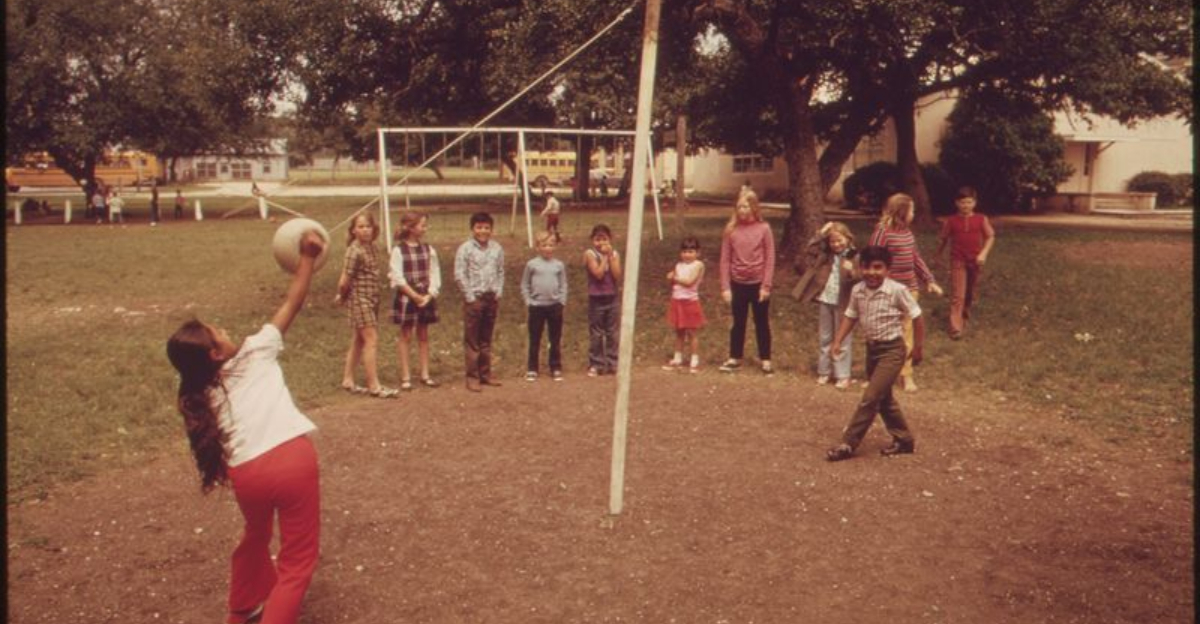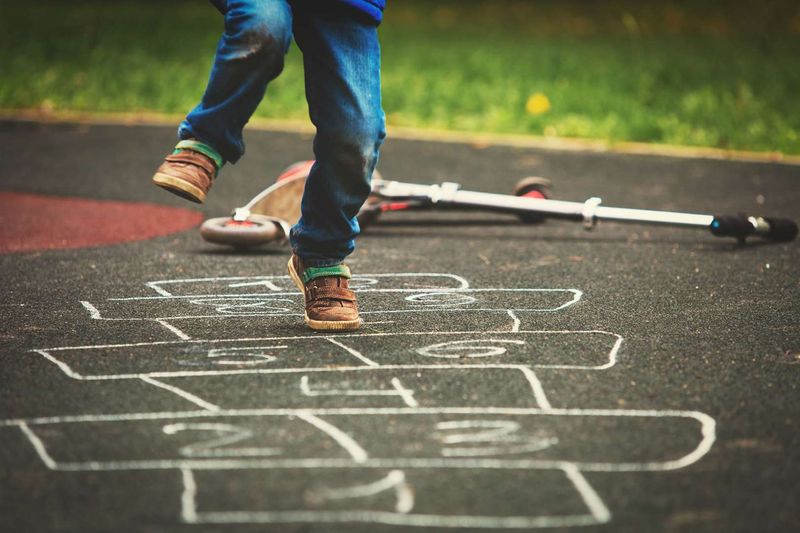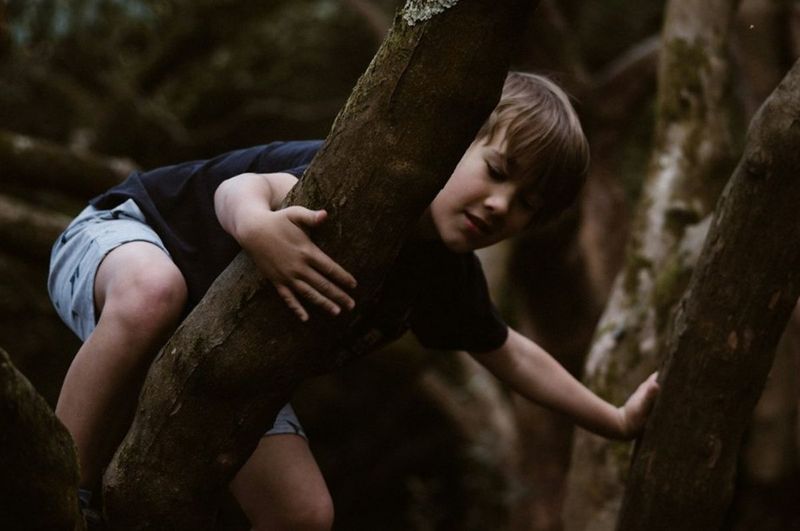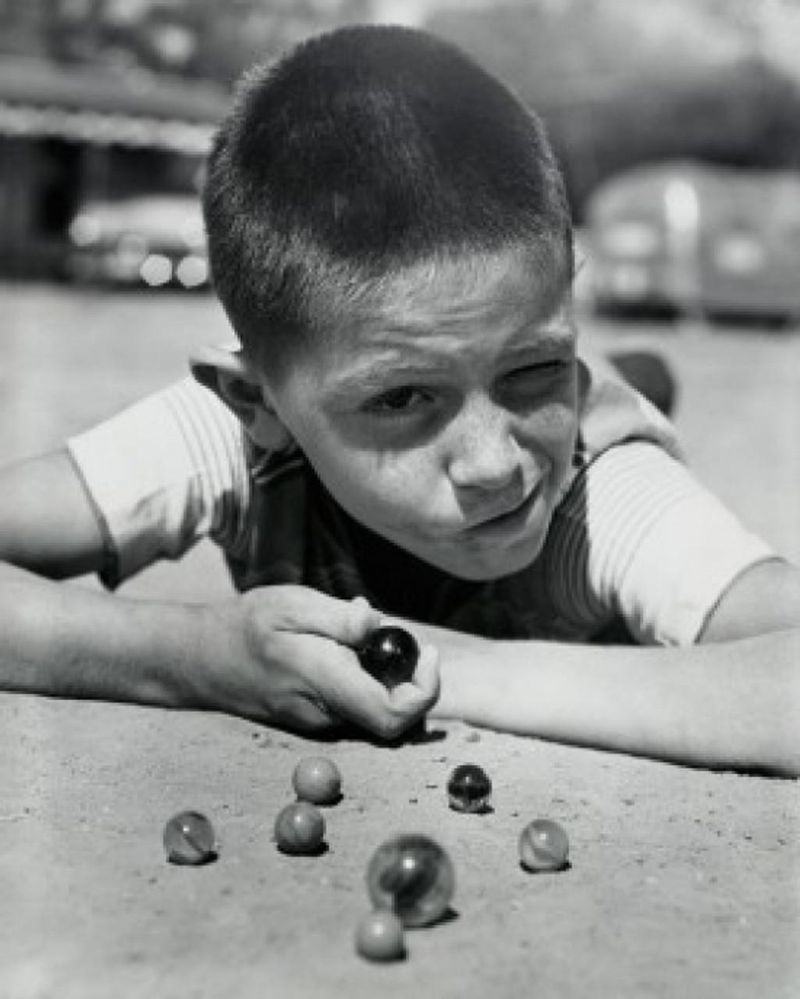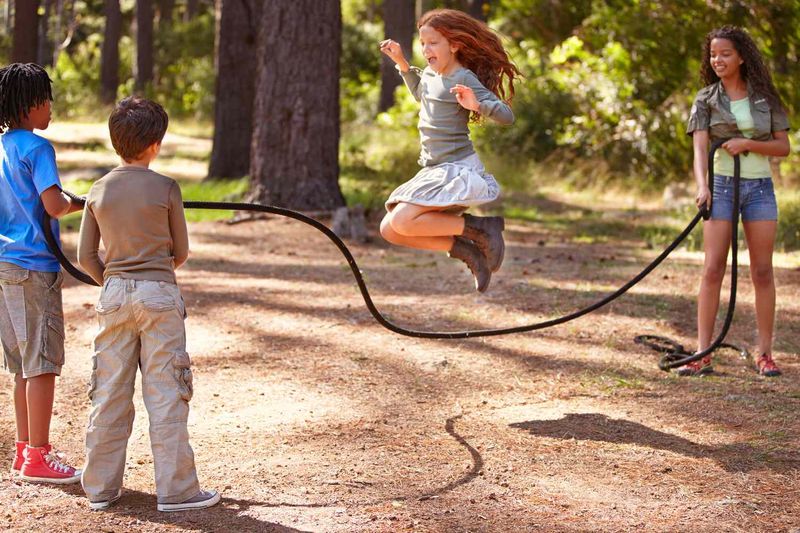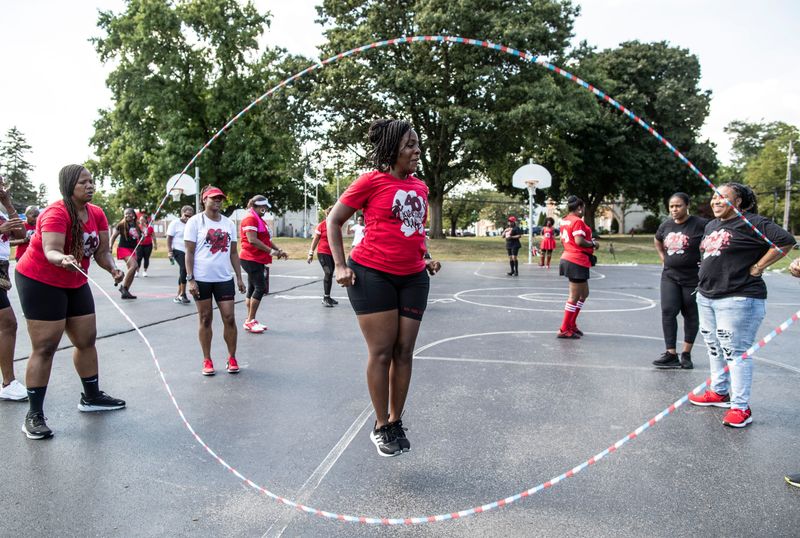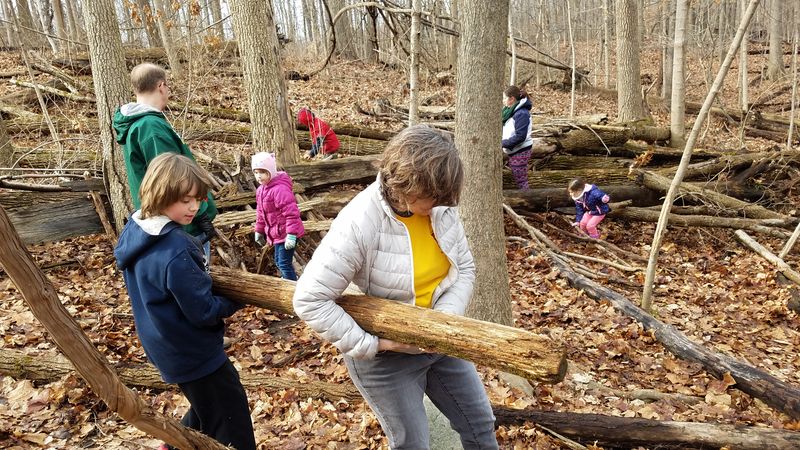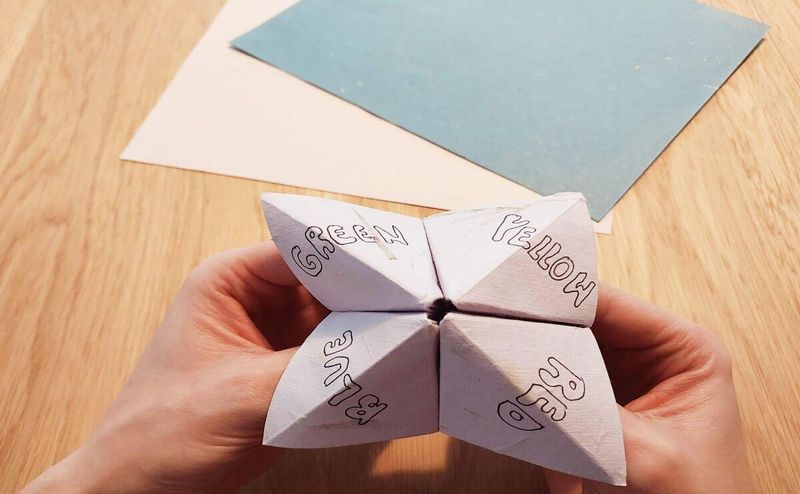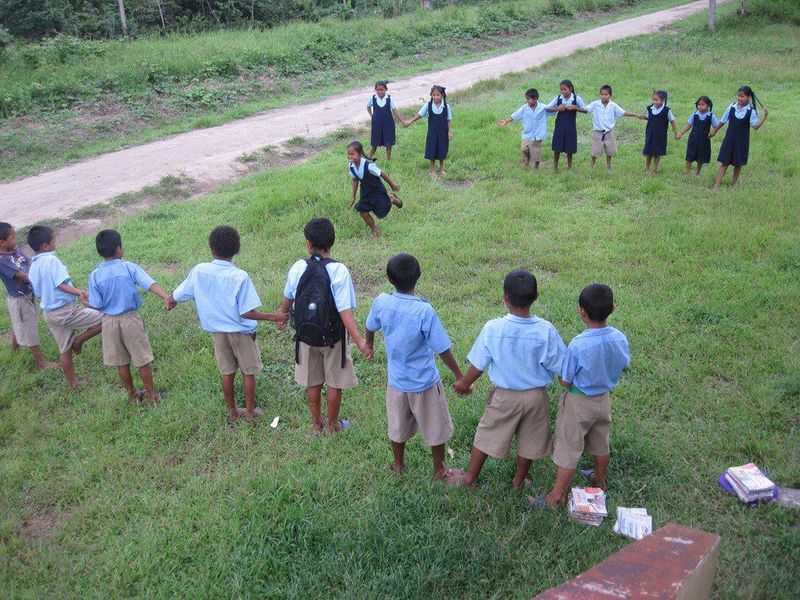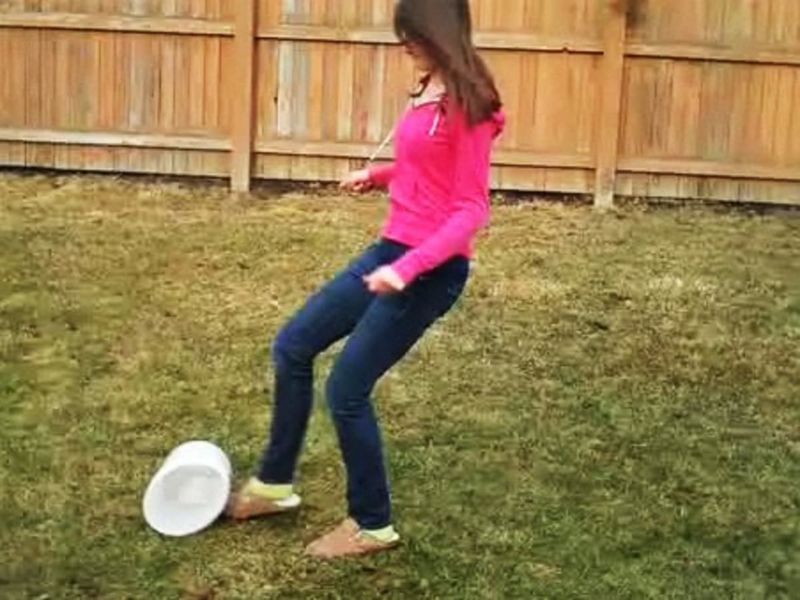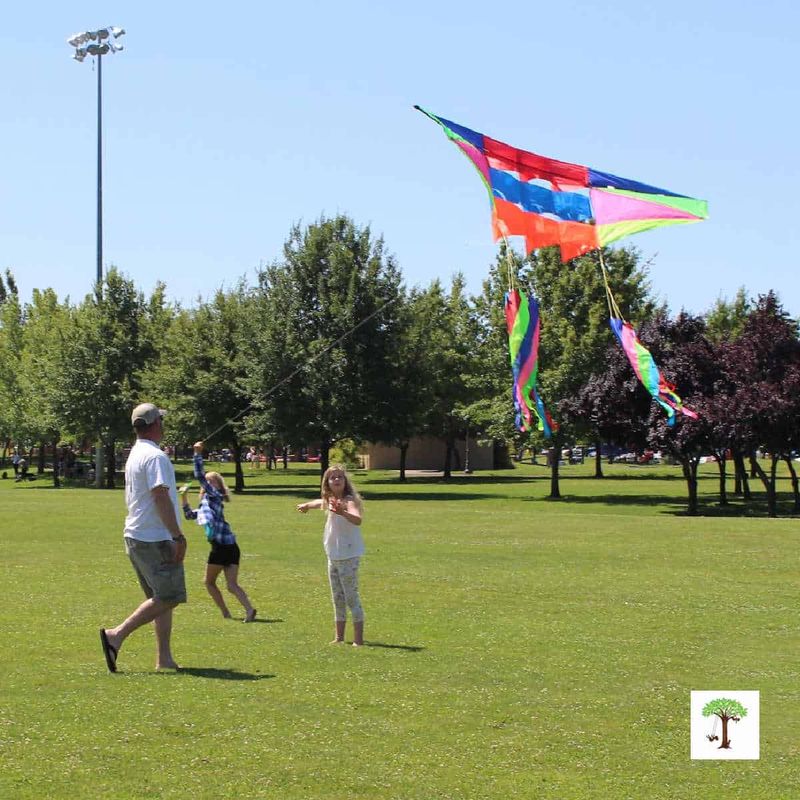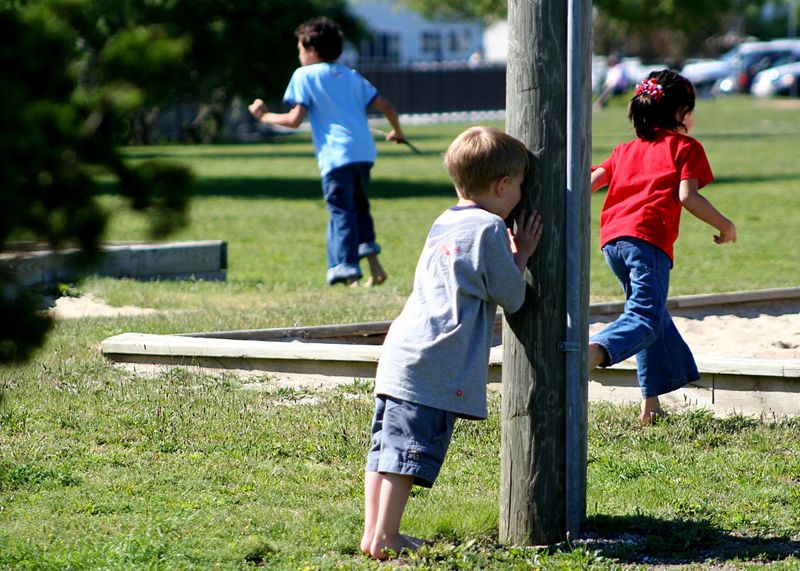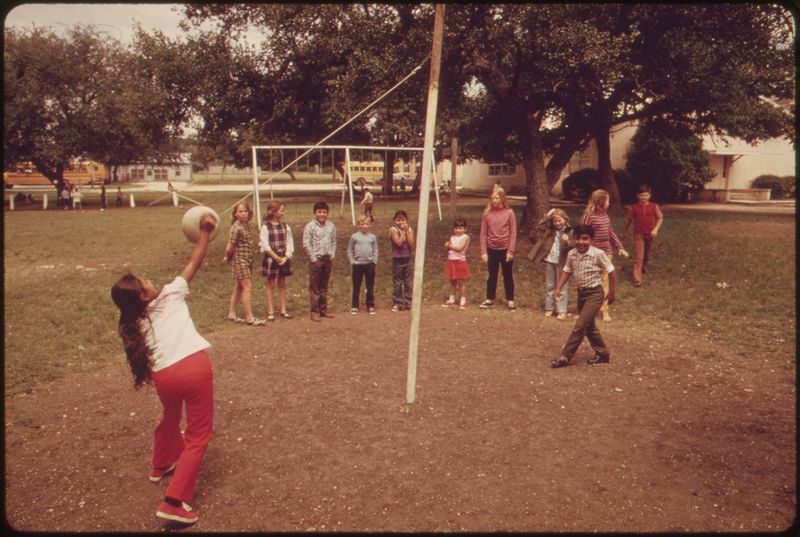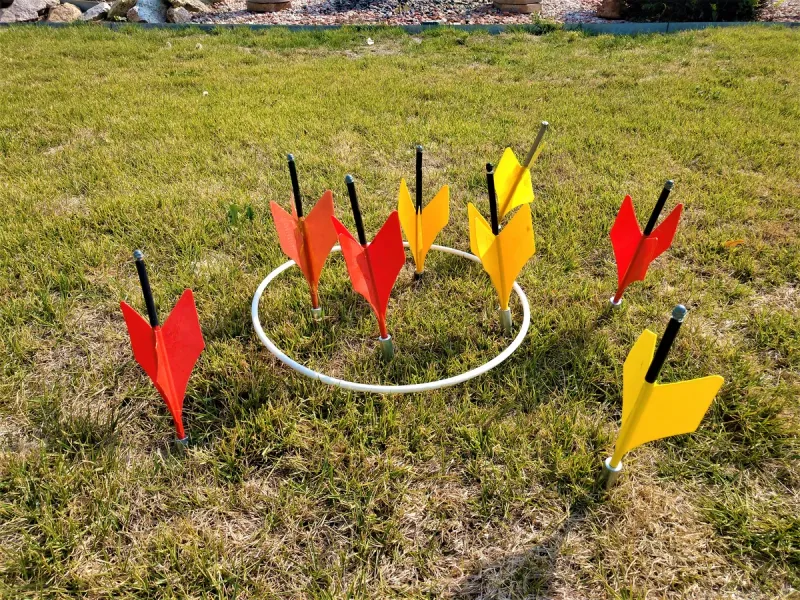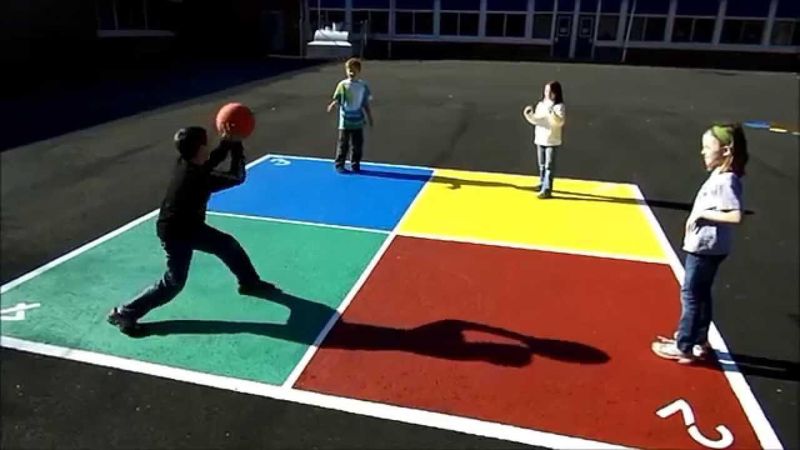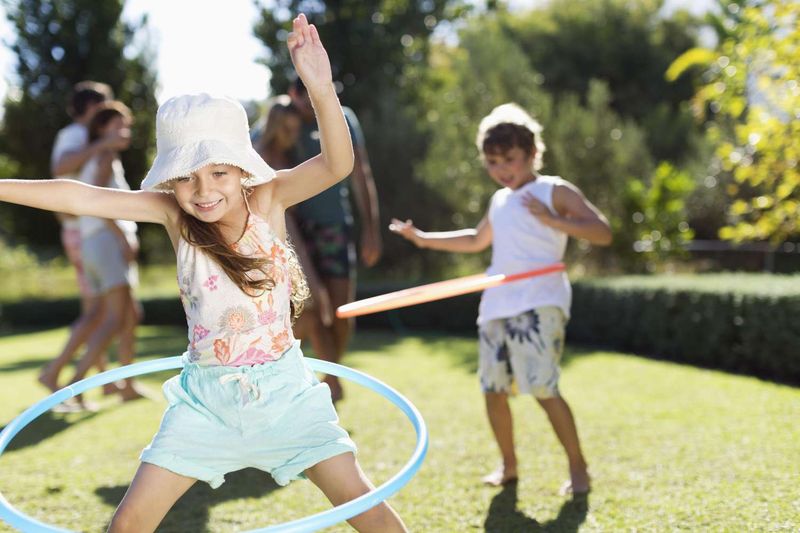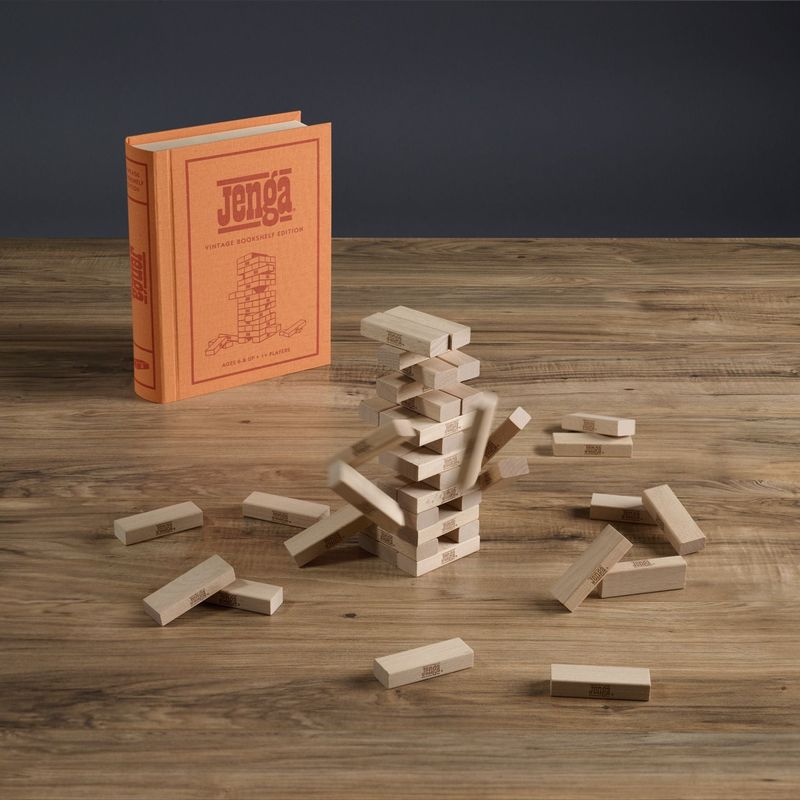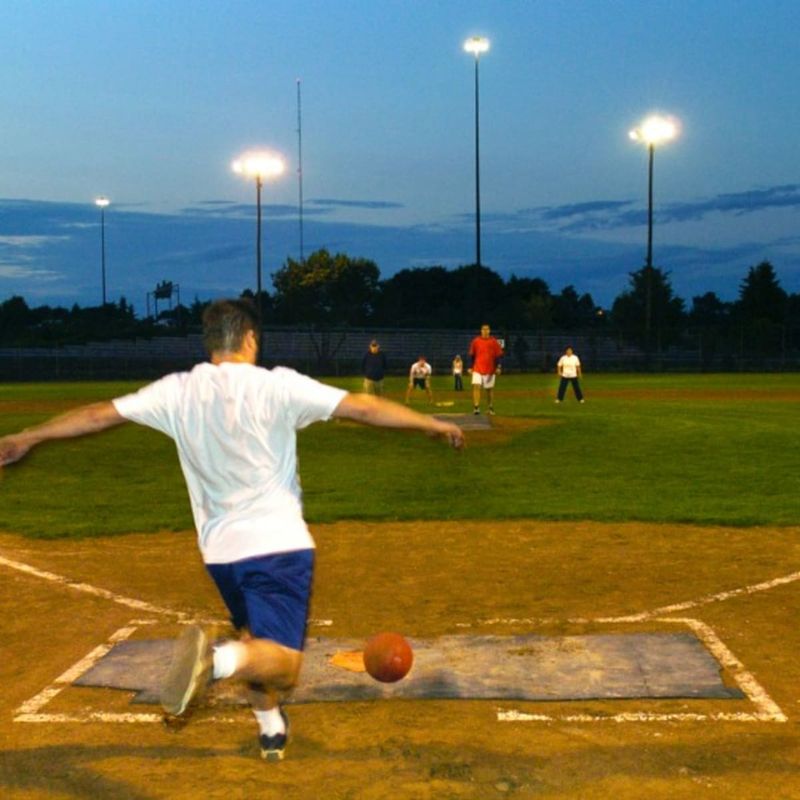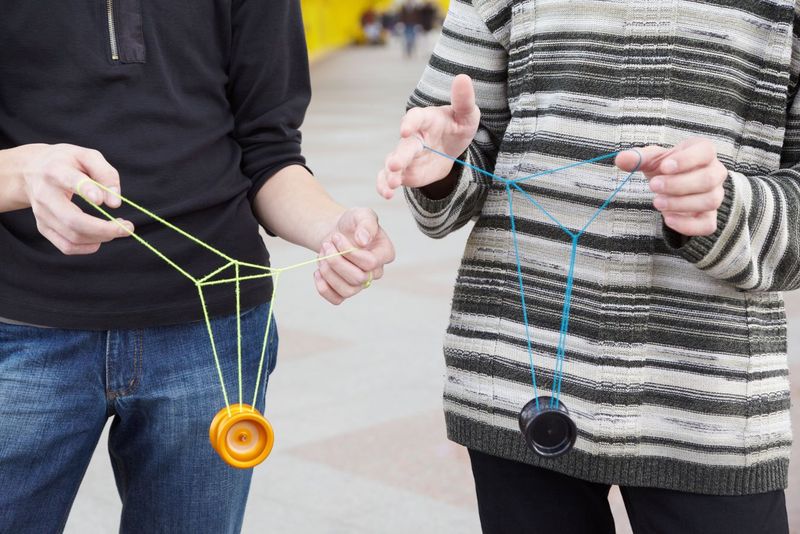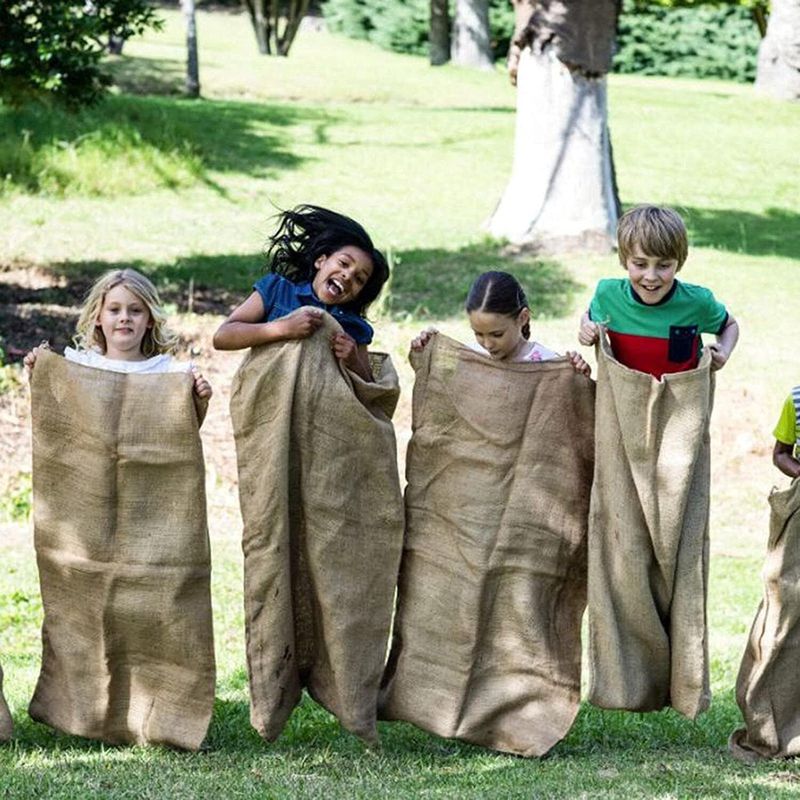Dive into a nostalgic journey as we explore 22 childhood activities that today’s kids might have never experienced. These classic games and pastimes were integral to many of our early years, offering not just entertainment but also valuable life lessons.
From outdoor adventures to creative indoor pursuits, each activity brings back a flood of memories and a longing for simpler times. Let’s take a stroll down memory lane and rediscover the joy of these timeless activities.
1. Hopscotch
Hopscotch was a staple of playground fun, requiring just a piece of chalk and a flat surface. Children would draw squares on the ground, numbering them sequentially, and take turns tossing a stone onto the squares.
The objective was to hop on one foot across the squares to retrieve the stone, without stepping on lines. This game wasn’t just about agility but also balance and coordination.
Each turn was filled with anticipation as players tried not to lose their footing. Today, hopscotch might seem simple, but it was a thrilling challenge.
2. Climbing Trees
Climbing trees was more than just a pastime; it was an adventure wrapped in leaves and bark. Kids would scramble up sturdy branches, finding the best vantage points.
Each climb was a test of courage and dexterity, as they navigated the rough bark and reached for the next limb. The view from the top was always rewarding, offering a sense of freedom and accomplishment.
While safety was a concern, the thrill of climbing and the bond with nature were unmatched. Today’s children rarely enjoy this simple yet exhilarating activity.
3. Playing Marbles
Playing marbles was once a competitive and skillful pastime, requiring precision and strategy. Kids would draw a circle in the dirt and take turns flicking their marbles to knock opponents’ marbles out of the ring.
The game demanded a steady hand and keen eye, as players aimed to win marbles from others. Each game was different, with various strategies and techniques employed.
The tactile experience of handling marbles and the excitement of winning new ones made it a favorite. Now, marbles are often forgotten, overshadowed by digital games.
4. Jump Rope
Jump rope was a rhythmic blend of fitness and fun, often accompanied by singing and chanting. Kids would take turns jumping in and out of a swinging rope, sometimes adding tricks and variations.
The game could be played solo or in groups, with the challenge increasing as more people joined in. It was not only a test of timing and coordination but also endurance.
Group jump rope games fostered teamwork and camaraderie, as chants and laughter filled the air. While simple, it provided hours of entertainment and exercise.
5. Double Dutch
Double Dutch was an advanced form of jump rope that required double the skill and agility. It involved two ropes swung in opposite directions, with players jumping in rhythm.
Mastering Double Dutch was an impressive feat, combining footwork with synchronized movements. The game often attracted spectators and created a sense of community, as jumpers showcased their talent.
Many children spent hours perfecting their Double Dutch skills, turning simple jumps into performances. Today, the art of Double Dutch is rarely seen on playgrounds, yet it remains a celebrated skill.
6. Building Forts
Building forts was an exercise in creativity and teamwork, transforming ordinary spaces into extraordinary realms. Using blankets, pillows, and furniture, kids constructed hideaways where imaginations ran wild.
Forts became castles, spaceships, or secret clubs, limited only by creativity. The process of building them taught spatial awareness, problem-solving, and collaboration. Kids took pride in their creations, often spending hours immersed in their newfound worlds.
In today’s digital age, such activities are rare, but they remain a cherished memory for many who enjoyed the thrill of creating something from nothing.
7. Cootie Catchers
Cootie catchers, also known as paper fortune tellers, were more than just a playground fad; they were a creative outlet for self-expression. Kids would fold paper into intricate shapes, writing fortunes or fun tasks on the inside flaps.
The process of making a cootie catcher was as enjoyable as playing with one. Children chose colors, numbers, and words to craft personalized experiences for their friends. It was an exercise in creativity and storytelling.
These simple paper games sparked imagination and curiosity, offering a tangible way to engage others. They were a delightful part of childhood, spreading joy and surprise with every fold.
8. Red Rover
Red Rover was a game of strength and strategy, where children formed two lines, holding hands. One team would call a player from the opposite side to run and break their chain.
The chosen player would dash with all their might, trying to break through the held hands. Successful players returned with a new member, while those who failed joined the opposing team.
This game emphasized teamwork and physical resilience, with each round bringing a mix of anticipation and excitement. Although simple, Red Rover was a powerful exercise in unity.
9. Kick the Can
Kick the Can was a thrilling mix of hide-and-seek and tag, played in neighborhoods as the sun set. One player guarded a can while others hid. The goal was to sneak up and kick the can without being tagged.
It required stealth and speed, as players evaded capture. The game fostered creativity, as participants devised plans to distract the guard. Each round brought a new adventure, with kids’ laughter echoing through the streets.
Today, Kick the Can is less common, but it remains a nostalgic reminder of carefree summer evenings.
10. Flying Kites
Flying kites was an exhilarating outdoor activity that connected children with nature. Crafting the kite and choosing materials turned into a creative project. Once ready, the real fun began, as kids ran across fields to launch their kites into the sky.
It required patience and skill to keep the kite soaring high, riding the wind’s currents. The sense of accomplishment when a kite stayed aloft was unmatched.
This simple yet rewarding experience taught perseverance and an appreciation for the elements. Flying kites remains a cherished memory, though less common today.
11. Hide and Seek
Hide and Seek was the quintessential childhood game, played in backyards and playgrounds alike. One player counted while the others hid, waiting in breathless anticipation.
The seeker’s task was to find all hiders, who cleverly concealed themselves in nooks and crannies. This game trained observation and stealth, with players learning to blend into their surroundings.
Each round was a new adventure, filled with giggles and surprise when a hider was discovered. Though simple, Hide and Seek fostered creativity and quick thinking. It remains a timeless classic, still played by children worldwide.
12. Tetherball
Tetherball was a fast-paced game played with a ball tethered to a pole. Two players stood on opposite sides, hitting the ball in opposite directions to wind it around the pole.
The goal was to wrap the ball completely in one’s direction. Tetherball required quick reflexes and strategic thinking, as players anticipated their opponent’s moves. The game was a staple of school playgrounds, with kids vying for turns to prove their skill.
Its simplicity was its charm, providing endless hours of competitive fun. Tetherball has faded from many playgrounds today.
13. Playing Jacks
Playing jacks was a test of dexterity and timing, a game that could be played almost anywhere. With a set of jacks and a rubber ball, players competed to see who could gather the most jacks with each bounce.
The challenge increased with each round, demanding quicker reflexes and better hand-eye coordination. It was a game of patience and precision, often passed down through generations.
Kids would spend hours perfecting their skills, sharing techniques, and enjoying the simplicity of the game. In today’s fast-paced world, playing jacks is a rare sight.
14. Lawn Darts
Lawn Darts was a classic backyard game that combined skill and strategy. Players took turns throwing large darts towards circular targets placed on the ground, aiming to land as close as possible.
The game was a staple at family gatherings and picnics, where young and old alike enjoyed the friendly competition. It was all about accuracy and control, making it a challenging yet rewarding activity.
Though later deemed unsafe, Lawn Darts taught important lessons in aiming and patience. It created bonds and friendly rivalries, turning simple afternoons into cherished memories.
15. Four Square
Four Square was a dynamic playground game involving four players and a large rubber ball. A square court was divided into four smaller squares, each occupied by a player.
The objective was to eliminate opponents by bouncing the ball into their square, making it difficult for them to return. Each round demanded agility and strategic placement of the ball.
It was a game of quick decisions and reflexes, with players rotating through squares as they advanced. The simplicity of Four Square made it accessible to everyone, fostering friendly competition and teamwork.
16. Tag
Tag was the ultimate game of speed and agility, played in parks and playgrounds worldwide. One player, “It,” chased others, attempting to tag them with a light touch. Once tagged, that player became “It,” and the chase continued.
Tag encouraged physical activity and tested players’ ability to dodge and weave. The game was endlessly adaptable, with variations like freeze tag and shadow tag adding new challenges.
Tag fostered camaraderie and laughter, as friends sprinted and strategized. While simple, its enduring appeal lies in the freedom and joy of running unencumbered, a timeless childhood delight.
17. Hula Hooping
Hula hooping was a delightful blend of exercise and rhythm, as kids spun hoops around their waists, necks, and limbs. It demanded coordination and timing, with each successful spin bringing a sense of achievement.
Hula hoops were a staple of playtime, often accompanied by friendly competitions to see who could keep the hoop spinning longest. The vibrant colors and simple mechanics made it accessible to all, promoting fitness and fun.
Today, hula hooping is less common among children, but it remains a nostalgic reminder of carefree days filled with laughter.
18. Playing Jenga
Playing Jenga was a game of skill and strategy, where players took turns removing wooden blocks from a tower without causing it to topple. Each move required a steady hand and careful consideration, as the tower became increasingly unstable.
Jenga was a favorite at family gatherings, sparking laughter and tension as players tested their nerves. It taught patience and precision, with each successful move met with cheers or sighs of relief.
Though simple in concept, Jenga provided endless entertainment and remains a beloved game, connecting generations through shared moments of suspense and joy.
19. Kickball
Kickball was a playground classic, blending the rules of baseball with the fun of kicking a ball. Teams took turns kicking a large rubber ball, running bases, and scoring runs. It was accessible to all, encouraging teamwork and friendly competition.
The simplicity of kickball made it a favorite during recess, as kids strategized their kicks and fielding plays. Whether under the sun or in a gym, the sound of the ball being kicked was synonymous with childhood joy.
Today, organized sports often overshadow kickball, but it remains a cherished memory for many.
20. Playing with Yo-Yos
Playing with yo-yos was both an art and a skill, as kids mastered tricks like “walk the dog” and “around the world.” Yo-yos came in various designs, each offering unique challenges.
This pastime required practice and patience, with players spending hours perfecting their technique. The satisfaction of executing a trick flawlessly was immense, sparking friendly competitions among peers.
Yo-yos encouraged creativity and persistence, as players discovered new tricks and evolved their style. Though less common today, yo-yos remain a symbol of youthful ingenuity, cherished by those who remember the thrill of mastering the spin.
21. Potato Sack Racing
Potato sack racing was a staple of school field days and community picnics, offering simple yet exhilarating fun. Participants hopped from start to finish, encased in burlap sacks, testing balance and agility.
The race was filled with laughter, as competitors stumbled and bounced their way to the end. It promoted physical activity and camaraderie, with friends cheering each other on.
Potato sack racing taught the joy of participation over competition, with everyone celebrating the effort, not just the win. Today, such races are rare, but they evoke fond memories of community spirit and playful rivalry.
